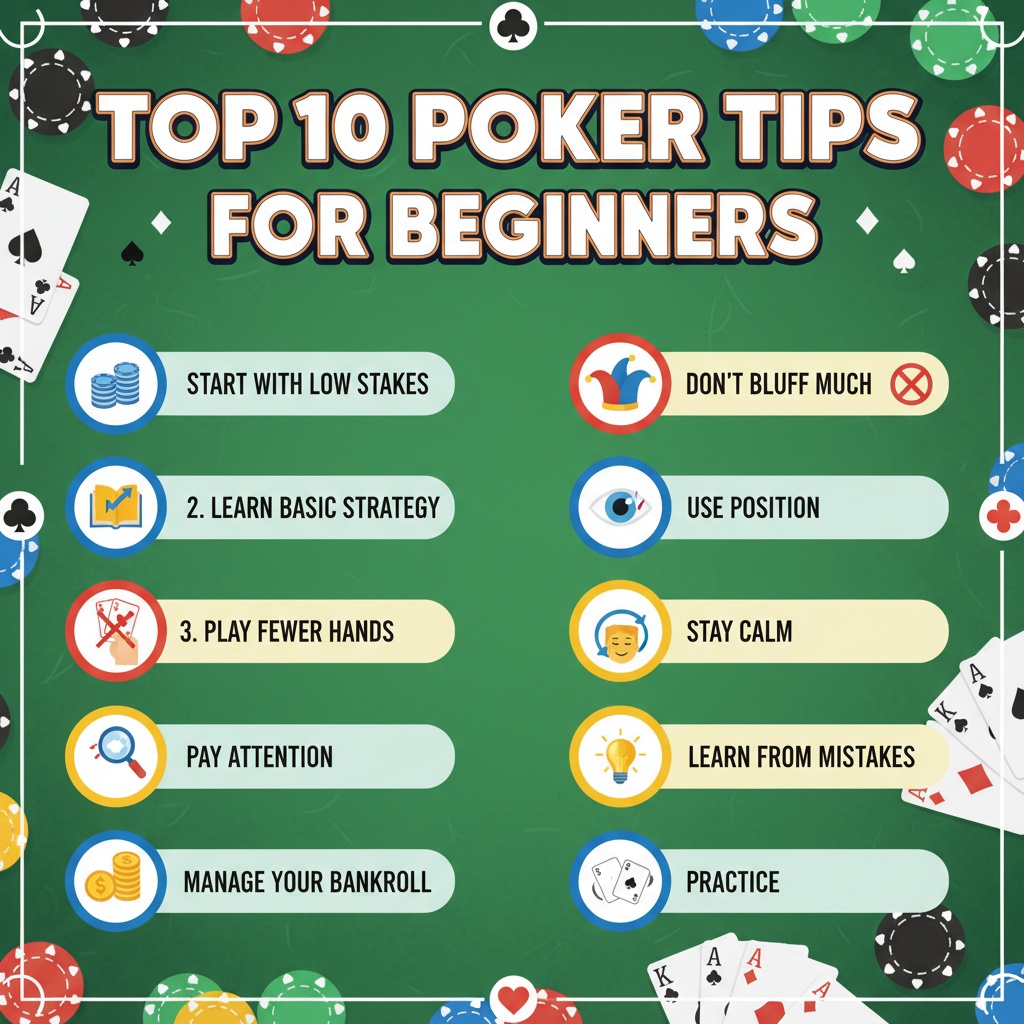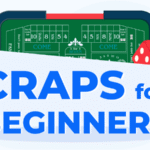
Top 10 Poker Tips for Beginners
A fast path to fewer mistakes and better results.
Last updated: September 3, 2025 · Beginner 8–10 minute read
How to Use This Guide
Goal: tighten up leaks fast. Read the 10 tips, skim the expansions, pick 1–2 drills, and bring the checklist to your next session.
Don’t try to learn everything at once. A small set of consistent, good habits beats a “fancy line” you’ll rarely see again.
The Original 10 Tips (Kept As‑Is)
- Play tight‑aggressive: fewer hands, more pressure.
- Respect position: act last more often.
- Size bets to the board: larger on wet, smaller on dry.
- Think in ranges, not single hands.
- Don’t slow‑play medium‑strength hands on draw‑heavy boards.
- Fold more to multi‑way aggression without strong equity.
- Track sessions; review key hands, win or lose.
- Mindset beats fancy lines: avoid tilt and fatigue.
- Table select: sit with players who make big mistakes.
- Study fundamentals weekly: hand rankings, pot odds, ICM basics.
Next steps: read our Texas Hold’em guide and plan a session with clear objectives.
Short Expansions for Each Tip
1) Tight‑Aggressive
Play strong starters (pairs, broadways, good suited connectors) and raise when you enter. Limping invites multi‑way pots and tough spots.
2) Position
Late position = more info. Open wider on the button; be cautious from early seats. Position alone turns marginal hands into playable ones.
3) Bet Sizing
“Wet” boards (draw‑heavy) deserve larger bets (≈ 60–80% pot). “Dry” boards (A♣‑7♦‑2♠) need less (≈ 25–40%). Keep sizes consistent across your range.
4) Ranges
Assign opponents a set of likely hands based on action/position. Think: “Top pair or draws?” not “exactly A♠Q♦?”
5) Don’t Slow‑Play
Two pair/top pair on wet boards should usually bet—free cards are expensive. Trap selectively on dry textures vs. aggressive foes.
6) Multi‑Way Discipline
Three‑way+ pots require stronger equity to continue. Fold medium hands to raises unless you have clear odds/outs.
7) Track & Review
Record stake, hours, buy‑in/out, + three key hands (why you bet/called/folded). Review weekly; tag recurring leaks.
8) Mindset
Schedule breaks every 60–90 minutes. If you’re tilted or tired, quit. Good energy > fancy bluffs.
9) Table Selection
Look for limpers, short stacks splashing, chatty calls. Avoid tables with multiple pros buying in deep and three‑betting often.
10) Study Cycle
Each week: 30 minutes on hand rankings/pot odds/ICM, 30 minutes on reviewing your hands. Consistency compounds.
Mini‑Drills You Can Do Today
Preflop Drill (15 min)
- Pick a position (UTG/BTN) and list your open‑raise hands.
- Adjust for table type (tight vs. loose).
- Compare to a basic chart; note 3 hands you misclassified.
Postflop Drill (15 min)
- Take 5 flops; label wet/dry.
- Write a default bet size for each.
- For one turn/river, plan bluff/value combos.
Live Etiquette & Quick Table Checklist
- Act in turn; protect your cards.
- Announce raises clearly; push chips forward together.
- Respect dealers/players; avoid slow rolls and angle‑shoots.
- Bring a focused buy‑in (cash game: $200–$300 at $1/$3 to start).
- Take scheduled breaks; hydrate; avoid alcohol until you’re done.
For bankroll planning, see How to Manage Your Casino Bankroll.
Glossary for True Beginners
- Wet/Dry board: texture with/without many draws.
- Equity: chance your hand wins at showdown.
- ICM: math model for tournament payouts/pressure.
- TAG: tight‑aggressive style (most beginners should aim here first).
References (Global & Trusted)
- Rules & Tournament Standards: Poker TDA — Official TDA Rules · WSOP — Tournament Policies
- Strategy & Education: PokerNews — Beginner Strategy · PokerStars School — Learning hub · GGPoker Learn — Concept primers
- Regional/Regulatory Resources: UK Gambling Commission — Safer Gambling · Singapore NCPG — Helpline & self‑exclusion · Macau DICJ — Responsible Gambling · Russia ERAI — Unified Gambling Regulator
- Data/Research: UNLV Center for Gaming Research — Gaming reports & data
We periodically review these links and update guidance if rules or best practices shift.






